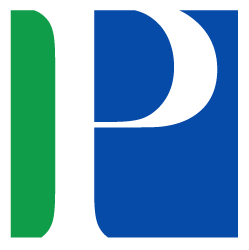Tagabawa bagobo folk narratives structures
Abstract
Aim: The purpose of this research is to examine the folk tales of the Tagabawa Bagobo, an indigenous group living in the southern Philippines, and to make comparisons and contrasts between their narrative structures. Narratives are aesthetically pleasing because of the careful planning and execution of their syntactic construction. Despite this, there need to be more studies that dissect the narrative architecture of folk tales.
Method: This study employs a qualitative approach to inquiry, specifically a descriptive research layout. Tzvetan Todorov, a French-Bulgarian literary theorist, provided the theoretical foundation for this approach, which he called "narratology." In this analysis, ten Tagabawa Bagobo folktales are used.
Findings: The study found that all ten folk tales used contained narrative units. You can think of these narrative units as the building blocks of any story or narrative. These basic elements consist of nouns, verbs, and adjectives. Predicates are acted upon by these, and they can take the form of either immutable states or mutable qualities and conditions. Propositions form the basis of folk tales. The two parts of a proposition are (a) the thing being discussed or named (the argument or entity) and (b) an assertion or predicate about the argument. A proposition is a sentence with a subject and a predicate. Todorov’s five-stage model of narrative, which begins with equilibrium and concludes with restoration, is reflected in the propositions. These phases are typical of narratives, beginning with the exposition and ending with the conclusion.
Implications/Novel Contribution: The current author argues that Todorov’s structural theory provides a useful lens through which to examine the contemporary relevance of folk tales
References
Bascom, W. (1965). The forms of folklore: Prose narratives. The Journal of American Folklore, 78(307), 3-20. doi:https://doi.org/10.2307/538099
Boccaccio, G. (1997). The decameron of boccacio. New York, NY: Leon Amiel.
Bordwell, D., & Kristin, T. (2008). Film art: An introduction. New York, NY: McGraw Hill.
Cole, F. C. (1913). The wild tribes of davao district, mindanao. field mus. History of Anthropological Series, 12(2), 45-70.
Das, P., & Mohan, R. L. (2016). Irula folk tales. The Criterion: An International Journal in English, 5(5), 1-9.
Elbanbuena, E. (2016). Tagabawa bagobo folktales (Unpublished master’s thesis). University of Southeastern Philippines, Davao, Philippines.
Eugenio, D. L. (1982). Philippine folk literature. Quezon City, Philippines: Folklorists Inc.
Eugenio, D. L. (1994). Philippine folk literature: The myths. Honolulu, HI: University of Hawaii Press.
Gloria, H. K. (1987). The bagobos: Their ethnohistory and acculturation. Chicago, IL: Cellar Book Shop.
Irshad, H., & Taib, H. M. (2017). Calendar anomalies: Review of literature. Journal of Advances in Humanities and Social Sciences, 3(6), 303-310. doi:https://doi.org/10.20474/jahss-3.6.2
Kim, H. (2010). Telling tales from Southeast Asia and Korea: Teacher’s guide. Retrieved from https://bit.ly/3bviqmC
Leach, M., & Jerome, F. (1950). Standard dictionary of folklore, mythology and legend. New York, NY: Funk and Wagnalls Co., Inc.
Lumbera, B. (2002). Filipinos writing. Quezon City, Philippines: Abiva Publishing Co.
Lumbera, B., & Lumbera, C. N. (1982). Philippine literature: A history and anthology. Pasig City, Philippines: National Book Store.
Manuel, E. A. (1985). Guide for study of Philippine folklore. Quezon City, Philippine: Folklore Society.
Mapene, S. D. (2001). Tagabawa bagobo katutubo peoples of the philippines cultural communities. Manila, Philippines: National Commission on the Culture and the Arts.
Mindanao Studies Creation Foundation, Incorporation. (2005). Annotated biliography of Mindanao studies Davao city. Retrieved from https://bit.ly/3lUBgse
Selden, R. (2005). Peter widdowson and peter brooker: A reader’s guide to contemporary literary theory. London, UK: Pearson Education Limited.
Sharma, M. R. (2019). Activities used in teaching short stories at bachelor level. International Journal of Humanities, Arts and Social Sciences, , 5(6),, 243-250. doi:https://dx.doi.org/10.20469/ijhss.5.20004-6
Tiu, M. D. (2005). Davao: Reconstructing history from text and memory. Davao, Philippines: Ateneo de Davao University, Research and Publication Office for the Mindanao .
Todorov, T. (1977). The poetics of prose. Ithaca, NY: Cornell UP.
Tuban, J. R. (2016). Tagabawa bago folk speech (Unpublished master’s thesis). University of Southeastern Philippines, Davao, Philippines.
Tuban, R. (1977). Tausug folk literature. In, Readings in Philippine folklore. London, UK: Sage Publications.
Tuban, R. C. (1992). Tausug oral traditions: A study of tausug values (Unpublished doctoral dissertation). University of the Philippines, Davo, Philippines.
Yu, A. L. E. (2016). Narrative structures in kagan folktales (Unpublished master’s thesis). University of Southeastern Philippines, Davao, Philippines

This work is licensed under a Creative Commons Attribution-NonCommercial 4.0 International License.












.png)










